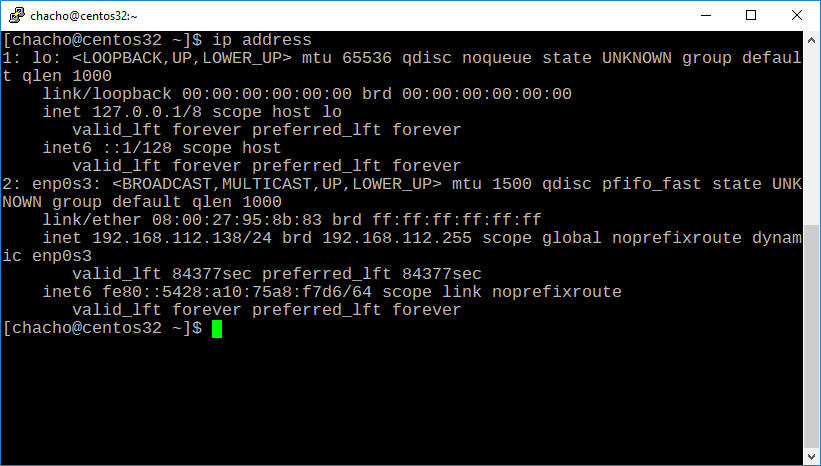
TX errors 0 dropped 0 overruns 0 carrier 0 collisions 0 Now, you’ll be able to use the command ifconfig as usual.
Centos 7 ifconfig install#
So, let us install net-tools package to use ifconfig command. Here, “provides” or “whatprovides” switches are used to find out which package provides some feature or file.Īs you see in the above output, the net-tools package provides the ifconfig command. Or you can use the following command too.

Loading mirror speeds from cached hostfile Sample Output: Loaded plugins: fastestmirror To do that, enter the following command: yum provides ifconfig First let us find out which packages will provide ifconfig command. If you don’t know where to find the ifconfig command, follow the simple steps provided below. TX: bytes packets errors dropped carrier collsnsģ00403 4249 0 0 0 0 How do I enable and use “ifconfig” Command in CentOS 7 minimal servers? RX: bytes packets errors dropped overrun mcast Sample output: 1: lo: mtu 16436 qdisc noqueue state UNKNOWN mode DEFAULTĢ: venet0: mtu 1500 qdisc noqueue state UNKNOWN mode DEFAULT To view the statistics of your network interfaces, enter the command: Sample output: 1: lo: mtu 16436 qdisc noqueue state UNKNOWN

To view the details of the network interface cards, enter the following commands: ip addr How do I find IP and other details of a network interface In CentOS Minimal server?ĬentOS 7 minimal systems, use the commands “ip addr” and “ip link” to find the details of a network interface card. But, this command is obsolete, and is not found in the minimal versions of RHEL 7 and its clones like CentOS 7, Oracle Linux 7, and Scientific Linux 7.
Centos 7 ifconfig mac#
It displays the details of a network interface card like IP address, MAC Address, and the status of a network interface card etc. As we all know, “ifconfig” command is used to configure a network interfaces in GNU/Linux systems.


 0 kommentar(er)
0 kommentar(er)
